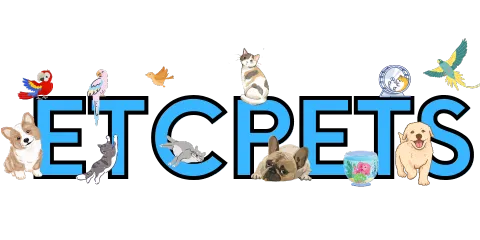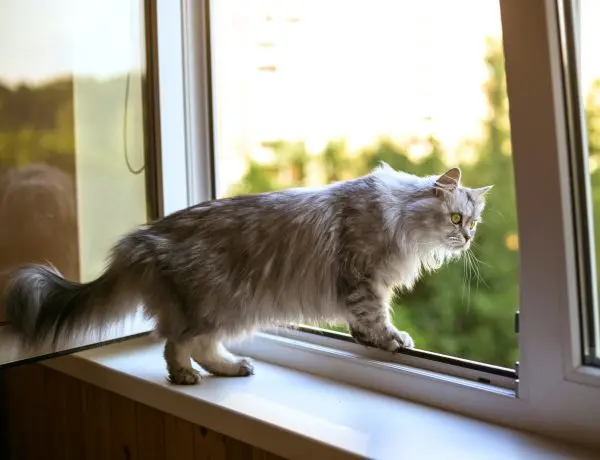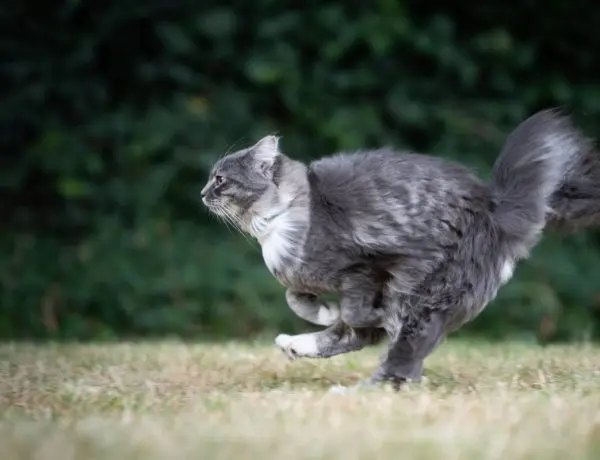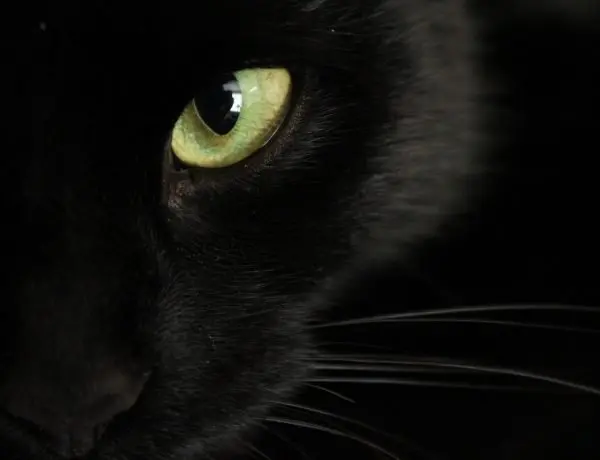They’re cute and furry, what more could you ask for? Munchkin cats have captured so many hearts because of their distinctive feature – those short little legs.
So, first of all, what is a Munchkin cat? A Munchkin cat is a medium-sized cat with very short legs. Their legs are usually about three inches shorter than the legs of most cats. This difference in leg length is due to a genetic mutation that was identified in the United States in 1983. Today, only a few animal organizations recognize them as an official cat breed.
While their unique build is due to a genetic mutation, they make excellent pets, and people often fall in love with their cuteness. Next, let’s take a look at the history of Munchkin cats, their personality, and how to know if the Munchkin cat is the right cat for your household.
Table of Contents
History of the Munchkin Cat
The Munchkin cat’s actual genetic mutation was identified and perpetuated in 1983 in the southern part of the United States. Before that, it was observed in multiple other places across the world, including the United Kingdom, Russia, and New England (US).
Munchkin cats were observed several decades ago in the UK. The first known reports of Munchkin cats came from a veterinarian in the UK who documented several generations of the cat, but it was not perpetuated by breeding, and so the mutation was lost. The Munchkin Cat mutation briefly appeared again in Russia ten years later.
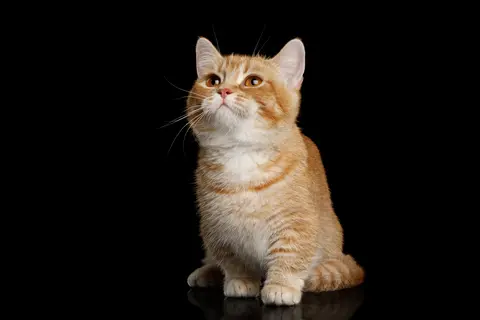
It wasn’t until the mutation appeared in the US that those little legs gained some popularity. A pregnant Munchkin cat named Blackberry was found underneath a truck in Louisiana. The person who found her fell in love with her short, little legs, and thus the Munchkin Cat breed persisted and grew. In 1983, the genetic mutation was officially identified and named after the munchkins from the beloved movie The Wizard of Oz.
It wasn’t until 2003 that Munchkin cats were recognized as an official breed by The International Cat Association (TICA). However, some other associations and organizations still do not consider them an official breed.
The Personality of Munchkin Cats
Munchkin cats are often described as “ferret-like” not only because of their body shape, but also because of their undeniable playfulness, curiosity, and high energy.
Despite their short legs, they are quick and active cats that will leap up onto countertops just like any other long-legged breed. They might have a more difficult time getting up there, but they will usually figure out a way to make it happen. They have many characteristics that pet owners find very desirable:
- They are intelligent
- They are sociable
- They can be taught to play fetch
- They can learn voice commands
Munchkin Cats and Other Pets
Munchkin cats love company, so they are usually comfortable and happy around people, dogs, and other cats. Their curious and fun-loving nature makes it easy for them to socialize with new people and new animals.
They will happily play with longer-legged cat breeds as well. Neither cat will consider the Munchkin cat’s shorter legs to be strange at all. They can wrestle and play normally together.
Munchkin Cats and Children
It is sometimes disputed whether Munchkin cats are a good breed with children. While Munchkin cats are generally very playful and sociable, it is recommended to acclimatize the cat to the kids first so they can get used to each other. Generally, Munchkin cats may do better with older children.
Of course, every individual cat is different, so it is important to slowly introduce a Munchkin cat to kids in order to determine if they are an appropriate fit for a family setting. But in many cases, Munchkin cats should be well-suited for family life.
Care for Munchkin Cats
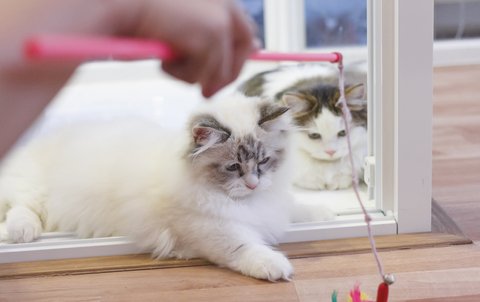
Munchkin cats are just like any other cat breed in that they will need attention and loving care to live a happy and healthy life. They are playful and full of energy, so it is important to keep your Munchkin cat entertained in various ways. Munchkins, like most cats, love running, chasing things, and playing with toys.
Munchkin cats usually love to spend time with their owners, so they will enjoy having lots of playtime and cuddle time.
Grooming a Munchkin Cat
Munchkin cats can come in a variety of colors and coat lengths, so their grooming will depend on their specific characteristics. Because of the Munchkin cat’s shorter legs, they will often need more help grooming themselves than a longer-legged cat. Its shorter legs make self-grooming much more of a challenge.
Grooming a Munchkin cat properly will include a myriad of different activities including:
- Brushing
- Nail Trimming
- Teeth brushing
- Ear cleaning
Their nails should be trimmed regularly like any other cat breed, and their teeth should be brushed regularly as well. Additionally, the Munchkin cat’s ears should be cleaned as needed to prevent infection.
Short-haired Munchkins can be brushed once a week, but long-haired Munchkin cats should be brushed two times a week or more. Brushing a cat’s coat is an essential part of grooming that prevents hairballs and matting.
Best Brushes for Grooming
There are tons of different options when it comes to picking the tools to groom your Munchkin cat. Any pet store will have many different brushes to choose from, and Amazon has so many options. Here are some of your best choices so you can pick what’s right for you and your cat:
The Professional Deshedding Tool – This is a best seller on Amazon with thousands of glowing reviews. It claims to reduce shedding by up to 95%, which is perfect for containing the coats of those long-haired Munchkin cats.
The Self-Cleaning Slicker Brush – As Amazon’s Choice, it gently removes loose undercoat, and it feels like a massage for your Munchkin cat. They will love getting brushed with this tool!
The Pet Hair Remover Glove – A fun and less expensive option that allows you to pet your kitty while grooming it at the same time! This way, your cat can enjoy your touch, and you can start to reduce your cat’s shedding!
Diet and Nutrition for Munchkin Cats
Another vital part of caring for your Munchkin cat is their diet and nutrition. Generally, they should be fed the same food as any other domestic cat. Munchkin cats’ weight and body mass are relatively the same as cat breeds with longer legs; keep that in mind when determining the amount of food to feed. A diet of wet food is often considered the best, but dry food can also be provided. Water should be available to your cat at all times.
Cats eat a lot of animal-based protein, and many believe that a raw food diet is best for them and provides them with the best nutrition. If you decide to start your cat on a raw diet, please be sure to do your research first.
Best Cat Food for Nutrition
It can be challenging to choose the best cat food for your Munchkin cat. When you are buying food, be sure to pick something specific to your cat’s age. During different stages in a cat’s life, they need different types of nutrients, so it is important to change their food as they grow older.
There are so many cat food options, but most people agree that wet food is the most optimal. So here are some of the best options for feeding your kitty good food:
Fancy Feast Gravy Lovers – This is Amazon’s Choice, and it is listed under Amazon’s Best Wet Food for Cats Editorial Recommendations list. This food packs a punch with nutrition and meaty flavors that your cat will love, including turkey, beef, and chicken!
Purina Friskies – Another very popular choice for wet cat food that is the rave. Amazon dubbed it ‘Expert’s Choice’ in its Editorial Recommendations. Purina Friskies offers seafood flavors as well as poultry for optimal feline health.
Sheba Perfect Portions – This cat food brand includes the natural meat juices in the package, so your cat will get all of those amazing nutrients. It is listed on Amazon as the ‘Bargain’ option under the best wet food for cats. If you are looking for something healthy on a budget, this could be the one!
Health of Munchkin Cats
Munchkin cats generally have a normal lifespan and can lead a full and healthy life with proper immunizations from the vet, and proper care.
The short legs of Munchkin cats are often compared to that of dog breeds of similar stature; such as Dachshunds, Corgis and Basset Hounds.
These dog breeds have short legs, just like the Munchkin cat, and those short legs sometimes come with health problems such as spinal issues. However, Munchkin cats don’t often deal with the same spinal issues as dog breeds like Dachshunds because cats naturally have more flexible spines.
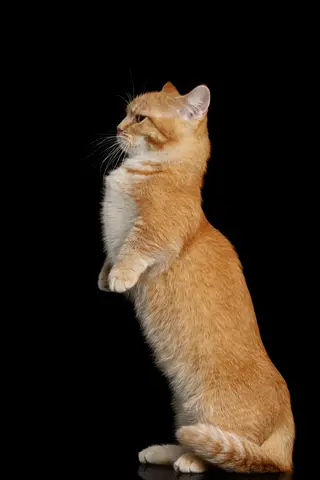
However, even with a more flexible spine, Munchkin cats can experience several different health issues because of their short stature. These include:
- Osteoarthritis (wearing down of the joints)
- Rib abnormalities (rib deformities)
- Lordosis (constriction of the heart and lungs due to skeletal deformities)
Other health issues Munchkin cats may develop, which are typical for long-legged domestic cats as well, include hyperthyroidism and pancreatitis. It is essential to take your cat to the vet for regular check-ups to ensure your Munchkin cat’s health and wellness.
Adopting a Munchkin Cat
There are several different ways that you can adopt a Munchkin cat. You can get one directly from a breeder, which will require research to find someone who breeds responsibly. You can find great resources for finding a breeder on the TICA website. Or you can adopt from a rescue shelter, which some people consider the best option for overall animal welfare.
Breeder or Rescue
If you are considering adopting a Munchkin cat, it is important to contact a well-respected and reputable breeder. In order to avoid the health problems that can come with irresponsible breeding, make sure that you adopt a Munchkin cat from a trustworthy source.
Additionally, there are cat rescues centers where you can adopt a rescue cat that came from another home and is looking for a happy family to join. You can check out adoption and rescue centers near you by visiting ASPCA (American Society for the Prevention of Cruelty to Animals).
Controversy Surrounding Munchkin Cats
They may be adorable, cute, and cuddly, but Munchkin cats actually stir up some controversy. Many people think that deliberately breeding for a genetic mutation is unethical and will impede these cats’ quality of life. They find problems with the ethics of selective breeding, animal cruelty, and possible health issues caused by the genetic mutation.
On the other hand, selective breeding is what all breeders do to get purebred breeds like Persian Cats, Bengal Cats, etc. This breeding may possibly cause common health problems that plague the breed and can lower their life expectancy over time. This controversy over the ethics of breeding this genetic mutation is precisely why the Cat Fanciers Association (CFA) will not recognize Munchkin cats as an official breed.
Many people find it wrong to breed Munchkin cats solely for the ‘adorable’ aesthetic of having a cat with short legs. There are health issues associated with having those shorter legs, though many people debate the existence of these health problems.
Other Small Cat Breeds
Munchkin cats do not have a monopoly on felines with small bodies and short legs! There are other breeds of cats that are shorter than your average house cat!
People fell in love with the Munchkin cat’s adorable short legs, and they began breeding Munchkin cats with other breeds to get different types of miniature breeds. Go ahead and take a look at these other breeds that are tiny, just like a Munchkin!
Bambino Cat
The Bambino is unique because not only does it have the naturally occurring genetic mutation for short legs, but it also has the genetic mutation for a hairless coat! That’s right, the Bambino is entirely hairless, much like the Sphynx cat, but it also has teeny tiny legs like the Munchkin!
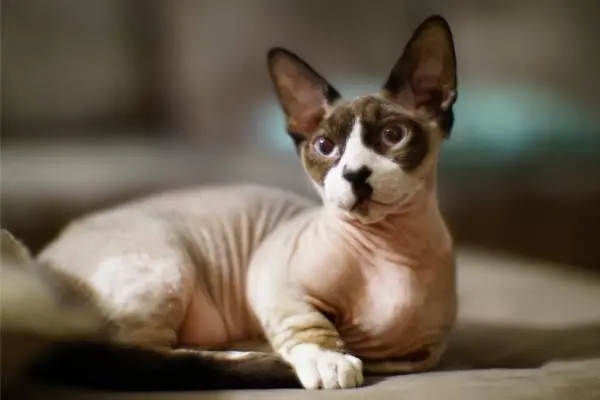
Like the Munchkin cats, their short legs may make them waddle a bit while walking, but they are just as active as any longer-legged cat. They love to run, jump, and play just like any other domestic breed!
Bambinos have a distinctive personality that makes them great for families. Bambinos are mischievous, affectionate, and energetic.
They may be hairless, but grooming a Bambino requires regular bathing, ear cleaning, and nail trimming. It is also important to protect them from direct sunlight in the summer and keep them warm with cozy sweaters in the winter.
Minskin Cat
The Minskin is a breed that is pretty rare, and relatively new. They are another miniature cat breed with shorter legs, but the Minskin’s other distinctive features are large ears, big eyes, and wrinkly skin.
Like the Bambino, the Minskin has wrinkly skin. But while the Bambino is entirely hairless, the Minskin can have a very short, non-shedding coat, or hair only on specific parts of their body. This means they should be groomed regularly with a bath.
The Minskin has a fun and lovable personality. Their curious nature means that they get along well with other animals, including dogs, they love people and are great with children. This is an excellent option if you’re looking for a miniature breed!
Lambkin Cat
The Lambkin is of the rarest miniature cat breeds ever. With two rare genetic mutations, it isn’t hard to see why. The Lambkin not only has the shorter legs genetic mutation like Munchkin cats, but also it has a curly-haired genetic mutation that gives it a luxurious curly coat.
These cats are soft, furry, tiny, and cute that they were appropriately named after lambs. However, this breed is so new and so rare, that it is mostly considered experimental, and it is not recognized by some cat associations. There are only a few dozen Lambkins in the world! But people fall in love with them because of their calm, easy-going, and affectionate personality traits.
Because of how rare this breed is, it is very important to find a trusted and reputable breeder. There is still a lot of controversy surrounding breeding cats with a genetic mutation, so a Lambkin cat will definitely be hard to find.
Is a Munchkin Cat the Right Breed for You?
Remember that whenever you adopt an animal, it is important to be sure that you are ready for the addition of a pet into your household. If you have children, make sure they understand the responsibility of caring for your new pet and the importance of being gentle and kind to the cat. Be sure you have the means available to care for your Munchkin throughout its entire lifetime, and be sure to carefully choose your breeder or shelter.
So, now that you have learned about Munchkin cats, you can decide if a Munchkin is the right cat for you. They are a charming and fun-loving breed, and they could make a wonderful addition to your household!
